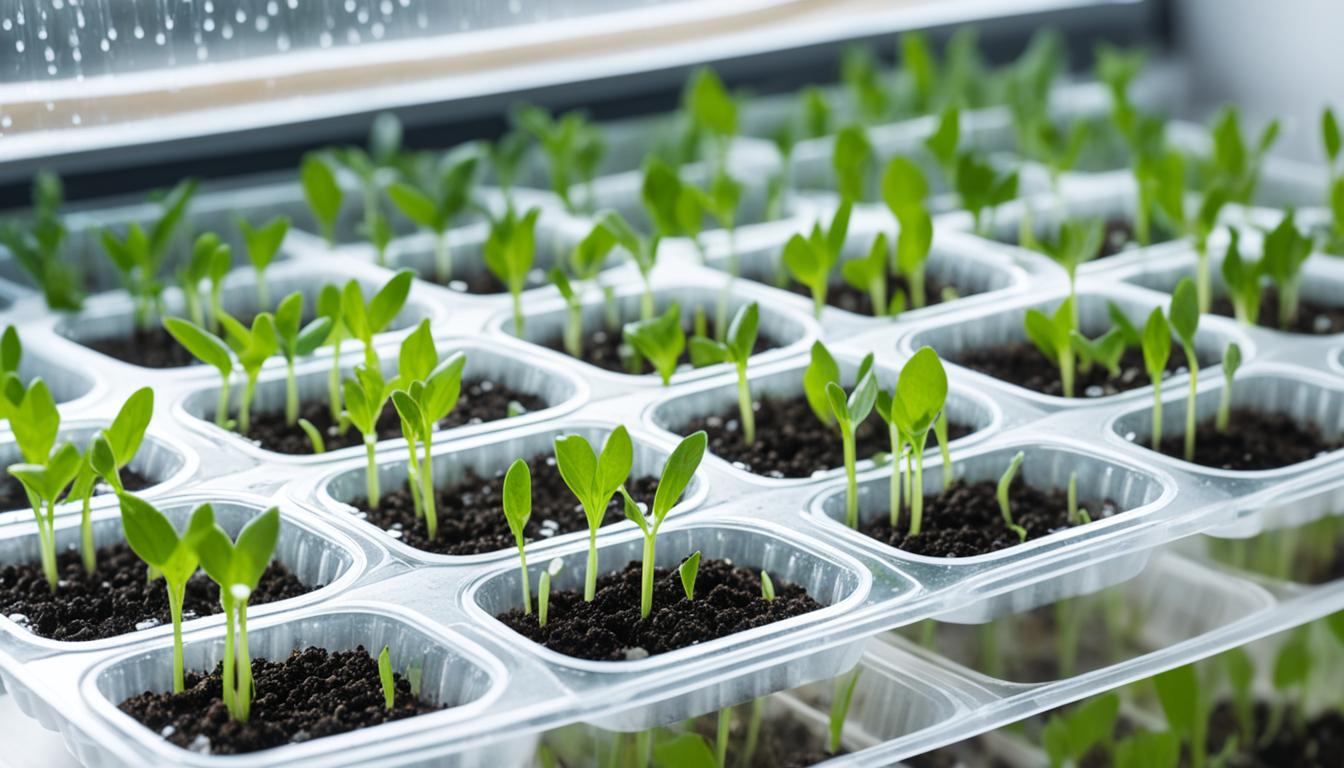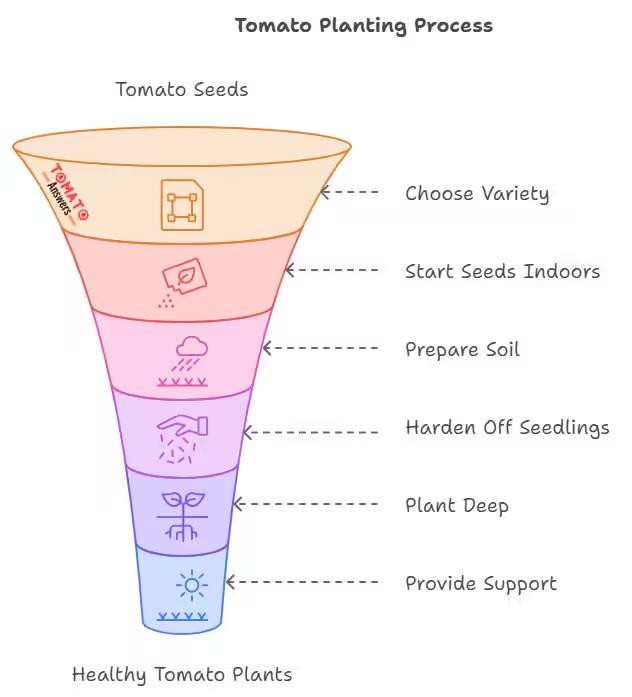Key Takeaways
- Choose the right tomato variety based on your needs and garden conditions.
- Start seeds indoors and harden off seedlings before transplanting.
- Prepare your soil with the right amendments and structure for optimal growth.
- Provide support and mulch to maintain plant health and productivity.
- Monitor watering, fertilizing, and pest control to ensure a healthy, bountiful harvest.
10 Tips for Planting Tomatoes Like a Pro
Introduction
Growing your own tomatoes can be incredibly rewarding, offering fresh, juicy fruits right from your garden. But to achieve a bountiful harvest, you need more than just seeds and soil. Whether you’re a seasoned gardener or a beginner, these expert tips will help you plant tomatoes like a pro.
From selecting the right varieties to proper planting techniques, you’ll find everything you need to ensure your tomato plants thrive.
Tip 1: Choose the Right Variety
Selecting the Best Tomato Varieties
Picking the right variety is crucial. Determine whether you want determinate (bushy) or indeterminate (vining) tomatoes based on your space and needs. Heirloom tomatoes offer great taste, while hybrids provide disease resistance and higher yields.
Popular Varieties to Consider
- Better Boy: High yield and disease-resistant
- Roma: Ideal for sauces
- Cherry Tomatoes: Perfect for salads and snacking
Tip 2: Start Seeds Indoors
When to Start Seeds
Start your tomato seeds indoors 6-8 weeks before the last expected frost. This gives them a head start and ensures they’re strong and healthy when it’s time to plant them outside.
Seed Starting Tips
- Use a quality seed starting mix
- Keep the soil moist but not waterlogged
- Provide plenty of light with grow lights or a sunny window
Tip 3: Prepare Your Soil
Testing and Amending Soil
Good soil is the foundation of healthy tomato plants. Test your soil for pH and nutrient levels. Tomatoes prefer slightly acidic soil with a pH of 6.0-7.0. Amend your soil with compost or well-rotted manure to improve fertility and drainage.
Improving Soil Structure
Aerate the soil by tilling or using a garden fork. Adding organic matter helps retain moisture and provides essential nutrients.
Tip 4: Harden Off Seedlings
Gradual Acclimation
Before transplanting your seedlings outdoors, harden them off by gradually exposing them to outdoor conditions. Start with a few hours of sunlight each day and increase the duration over a week.
Benefits of Hardening Off
This process reduces transplant shock and helps seedlings adjust to wind, sunlight, and fluctuating temperatures.
Tip 5: Plant Deep
Deep Planting Technique
When transplanting, plant your tomatoes deep, burying two-thirds of the stem. This encourages a stronger root system. Remove the lower leaves and bury the stem up to the first set of leaves.
Advantages of Deep Planting
Deep planting promotes root growth, leading to sturdier plants and better access to water and nutrients.
Tip 6: Provide Support
Types of Support
Tomatoes need support to keep the fruit off the ground and prevent disease. Use stakes, cages, or trellises to support your plants.
Installing Supports
Install supports at the time of planting to avoid damaging the roots later. Secure the plants gently to the supports as they grow.
Tip 7: Mulch Around Plants
Benefits of Mulching
Mulch helps retain soil moisture, suppress weeds, and regulate soil temperature. Organic mulches, like straw or wood chips, also improve soil structure as they decompose.
Mulching Tips
Apply a 2-3 inch layer of mulch around the base of your plants, but keep it away from the stem to prevent rot.
Tip 8: Water Wisely
Consistent Watering
Tomatoes need consistent watering to thrive. Aim for deep, infrequent watering rather than frequent shallow watering. This encourages deep root growth.
Avoiding Overwatering
Too much water can lead to root rot and other diseases. Ensure your soil drains well and only water when the top inch of soil feels dry.
Tip 9: Fertilize Regularly
Choosing Fertilizers
Use a balanced fertilizer or one specifically formulated for tomatoes. Start with a balanced fertilizer at planting time, then switch to a high-potassium fertilizer when fruits begin to set.
Application Methods
Side-dress with fertilizer every 3-4 weeks or use a liquid fertilizer according to the manufacturer’s instructions.
Tip 10: Monitor for Pests and Diseases
Common Pests and Diseases
Tomatoes can be affected by pests like aphids, hornworms, and diseases such as blight and blossom end rot. Regularly inspect your plants for signs of trouble.
Prevention and Treatment
Use disease-resistant varieties, practice crop rotation, and maintain good garden hygiene. If pests or diseases appear, treat them promptly with appropriate organic or chemical controls.
Conclusion
Planting tomatoes like a pro involves careful planning, preparation, and ongoing care. By following these tips, you’ll be well on your way to growing healthy, productive tomato plants that will reward you with a bountiful harvest. Happy gardening!
FAQs about Tips for Planting Tomatoes
How deep should I plant tomato seedlings?
Plant tomato seedlings deep, burying two-thirds of the stem to encourage strong root development.
What type of support is best for tomato plants?
Tomato cages, stakes, and trellises all work well. Choose based on your garden space and personal preference.
How often should I water my tomato plants?
Water deeply and infrequently, ensuring the soil is consistently moist but not waterlogged. Typically, this means watering 1-2 times per week, depending on weather conditions.
What are the signs of overwatering in tomatoes?
Signs include yellowing leaves, wilting despite wet soil, and the presence of mold or fungal growth on the soil surface.
How can I prevent tomato blight?
To prevent blight, use disease-resistant varieties, practice crop rotation, ensure good air circulation, and avoid overhead watering.

